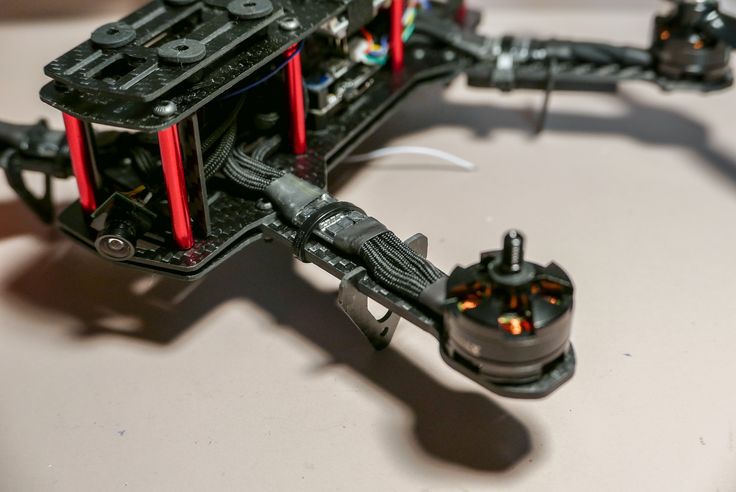The rapid evolution of drone technology has placed increasing demands on the reliability and efficiency of their internal systems. Among the critical components enabling seamless drone operation is the wire harness (also known as a cable harness or cable assembly). This intricate network of wires, connectors, and protective materials serves as the central nervous system of a drone, ensuring power distribution, signal transmission, and communication between components. In this article, we explore the importance of wire harness design for drones, key challenges, and emerging innovations in the field.
The Role of Wire Harnesses in Drones
A wire harness consolidates multiple electrical cables into a single organized assembly, reducing clutter and minimizing the risk of electrical interference. In drones, wire harnesses perform several essential functions:
- Power Distribution: Delivering power from batteries to motors, sensors, cameras, and other subsystems.
- Signal Transmission: Facilitating communication between flight controllers, GPS modules, telemetry systems, and payloads.
- Weight Optimization: Reducing overall weight by eliminating redundant wiring, which is critical for maximizing flight time and payload capacity.
- Durability: Protecting wires from environmental stressors such as vibration, moisture, and temperature fluctuations.
Key Design Considerations
Designing a wire harness for drones requires balancing performance, weight, and durability. Below are the primary factors engineers must address:
1. Weight and Space Constraints
Drones demand lightweight designs to enhance agility and flight endurance. Wire harnesses must use thin, high-conductivity wires (e.g., copper or aluminum alloys) while maintaining current-carrying capacity. Additionally, compact routing is essential to avoid interference with moving parts like rotors or gimbals.
2. Flexibility and Vibration Resistance
Drones experience constant vibrations during flight, which can lead to wire fatigue and failure. Harnesses must incorporate flexible cables and strain relief mechanisms at connection points. Silicone-insulated wires are often preferred for their flexibility and temperature resistance.
3. Electromagnetic Interference (EMI) Shielding
Sensitive components like GPS receivers and radio transmitters are vulnerable to EMI. Shielded cables, twisted pairs, or ferrite cores may be integrated into the harness to minimize noise and ensure reliable signal integrity.
4. Environmental Protection
Outdoor drones face exposure to moisture, dust, and extreme temperatures. Wire harnesses should employ waterproof connectors (e.g., IP67-rated), heat-shrink tubing, and corrosion-resistant materials to ensure longevity.
5. Modularity and Serviceability
Modular harness designs simplify maintenance and repairs. Quick-disconnect connectors allow for easy replacement of damaged sections without disassembling the entire drone.
Innovations in Drone Wire Harness Technology
Advancements in materials and manufacturing techniques are driving improvements in wire harness design:
1. Lightweight Materials
- High-Strength Alloys: Aluminum and composite wires reduce weight without sacrificing conductivity.
- Miniaturized Connectors: Micro- and nano-connectors save space while maintaining reliable connections.
2. Additive Manufacturing
3D printing enables custom harness brackets and conduits tailored to a drone’s internal layout, optimizing cable routing and strain relief.
3. Smart Harnesses
Embedded sensors can monitor wire health in real time, detecting issues like overheating or insulation wear before they lead to failures. This is particularly valuable for industrial and military drones operating in high-stakes environments.
4. Wireless Power and Data Transfer
While still in development, wireless technologies could reduce reliance on physical wiring for low-power components, further simplifying harness design.
Challenges and Future Trends
Despite progress, challenges remain. Balancing cost, performance, and scalability is critical for consumer and commercial drones alike. Additionally, the rise of autonomous drones and AI-powered systems will demand even more robust and intelligent wiring solutions.
Looking ahead, trends such as modular drone platforms and swappable payloads will drive demand for standardized, plug-and-play wire harnesses. Meanwhile, sustainability concerns may push manufacturers to adopt recyclable materials and eco-friendly production methods.
Conclusion
The wire harness is a cornerstone of drone functionality, enabling the seamless integration of complex systems into a compact, airborne platform. As drone applications expand—from aerial photography and agriculture to search-and-rescue missions—the importance of innovative, reliable wire harness design will only grow. By addressing weight, durability, and adaptability, engineers can ensure that drones continue to soar to new heights, both literally and figuratively.



